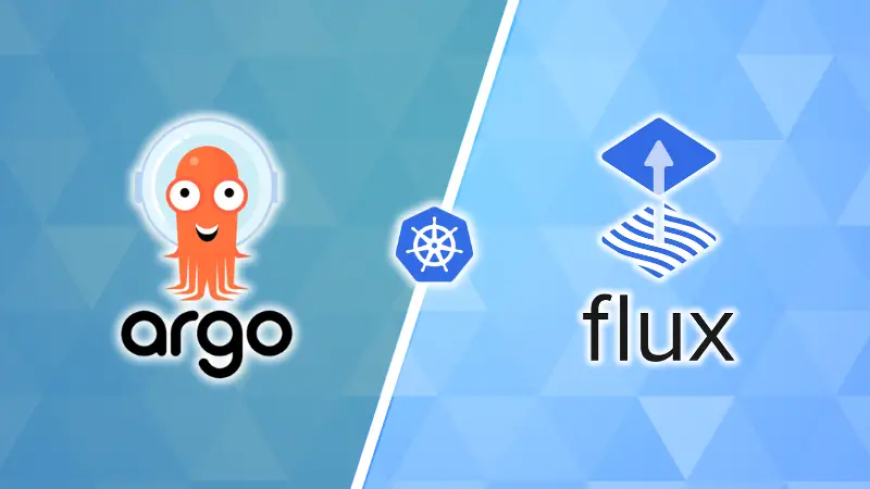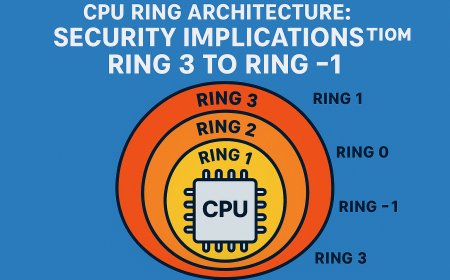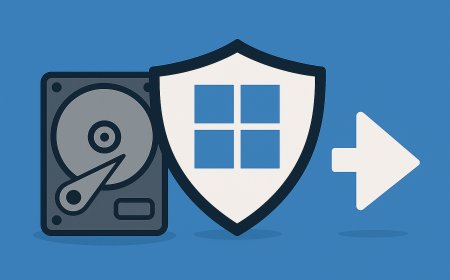ArgoCD vs FluxCD: Which GitOps Tool is Best for Kubernetes?
In 2025, Kubernetes teams are increasingly adopting GitOps to streamline deployments, but the choice between ArgoCD and FluxCD can make or break your workflow. ArgoCD is known for its rich UI, multi-cluster management, and easy rollbacks, while FluxCD shines with automation-first, Git-centric pipelines and lightweight operations. Choosing the right GitOps tool depends on your team’s size, complexity of deployments, and preference for UI versus CLI-driven workflows. This blog explores the differences, real-world use cases, and helps you decide which GitOps tool fits your Kubernetes strategy in 2025.

Introduction
GitOps has become the gold standard for managing Kubernetes deployments in 2025. By using Git as the single source of truth, teams can automate deployments, enforce policies, and roll back changes easily. Among the GitOps tools, ArgoCD and FluxCD are the most widely adopted, but each has its strengths, trade-offs, and ideal use cases. Choosing the right tool is crucial for DevOps and DevSecOps teams aiming for reliability, security, and speed in production environments.
Understanding GitOps and Its Importance
GitOps is a set of practices that use Git repositories as the single source of truth for declarative infrastructure and application configurations. It enables continuous deployment, version control, and auditability, thereby enhancing reliability, security, and operational efficiency. Kubernetes, being a complex orchestration platform, benefits significantly from GitOps practices, which streamline deployment workflows and improve consistency across environments.
1. Overview of ArgoCD
- Declarative GitOps Tool: ArgoCD continuously syncs Kubernetes manifests from Git repositories.
- Rich UI: Provides dashboards for monitoring application status, diffing manifests, and rolling back changes.
- Multi-Cluster Management: Supports managing multiple clusters from a single ArgoCD instance.
- Access Controls: Role-based access controls (RBAC) for teams, integrating with SSO providers.
- Automated Rollbacks: If a deployment fails, ArgoCD can revert to the last known good state automatically.
Ideal for: Enterprises with multiple clusters, teams that value visual dashboards, and those needing multi-team collaboration.
2. Overview of FluxCD
- Git-Centric, Lightweight Tool: FluxCD operates as a set of controllers within Kubernetes, pulling changes from Git.
- CLI and Git Automation: Primarily CLI-driven; emphasizes automation-first workflows.
- Kustomize and Helm Integration: Natively supports Helm charts, Kustomize overlays, and GitHub Actions integration.
- Minimal Resource Footprint: Lightweight, ideal for smaller clusters or edge deployments.
- Security-First Approach: Works well in rootless or tightly controlled environments.
Ideal for: smaller clusters, automation-heavy teams, and users who prefer Git and CLI over dashboards.
3. Key Differences
|
Feature |
ArgoCD |
FluxCD |
|
UI |
Full web dashboard |
Minimal, CLI-focused |
|
Multi-Cluster Management |
Yes, native |
Limited, requires additional setup |
|
Automation |
Git sync + manual/automated rollbacks |
Git sync, automation-first |
|
Helm/Kustomize Support |
Yes |
Native support |
|
Resource Usage |
Moderate |
Lightweight |
|
Security |
RBAC, SSO integration |
GitOps security-first, minimal attack surface |
|
Learning Curve |
Moderate |
Slightly steeper for beginners |
4. Real-World Use Cases
- ArgoCD
- Large enterprises with multi-cluster Kubernetes deployments.
- Teams needing visual dashboards to monitor applications across clusters.
- Environments where audit trails and RBAC are critical.
- FluxCD
- Smaller teams or startups with single-cluster deployments.
- Highly automated CI/CD pipelines integrated directly with Git.
- Edge computing, lightweight clusters, or environments with security restrictions.
5. Performance and Reliability
- Both tools are production-grade and actively maintained.
- FluxCD’s lightweight architecture makes it faster to install and scale in minimal clusters.
- ArgoCD provides more built-in observability and rollback features, which improves reliability in multi-cluster enterprise setups.
6. Security Considerations
- Both tools integrate with Kubernetes RBAC and secrets management.
- FluxCD’s minimal footprint reduces attack surface, while ArgoCD’s dashboards may require additional hardening in exposed environments.
- For regulated industries, ArgoCD’s audit and RBAC features provide a compliance edge.
Conclusion
In 2025, the choice between ArgoCD and FluxCD depends largely on your team’s size, cluster complexity, and workflow preferences:
- Choose ArgoCD if your organization values dashboards, multi-cluster management, and enterprise-level RBAC.
- Choose FluxCD if you prefer automation-first, lightweight, and highly Git-centric deployments.
Many teams adopt a hybrid approach—using ArgoCD for visibility and governance in large clusters, and FluxCD for automated pipelines in smaller or specialized workloads. Ultimately, both tools strengthen Kubernetes deployments when integrated correctly into DevSecOps workflows.





































